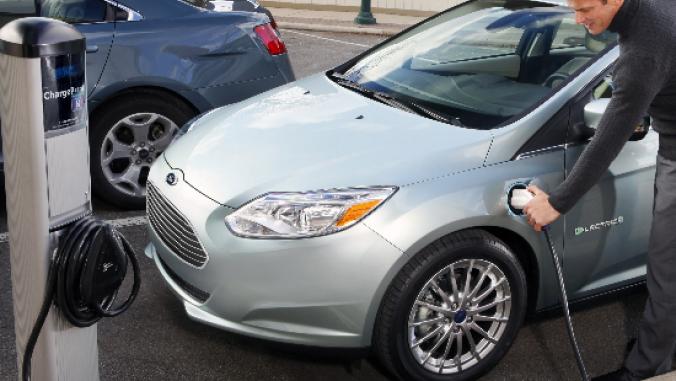Rolling Towards Greener Tires
<p>By making tires better at overcoming the resistance they face from the road, tire makers are helping vehicles increase their fuel economy and discarding the long-held principle that says any increase in rolling resistance would lower tire durability and grip in wet conditions.<br /> </p>

Tires - http://www.flickr.com/photos/dailyinvention/ / CC BY 2.0
One of the ways that auto makers are trying to squeeze a few more miles per gallon into their vehicles are with improvements to tires. But tire makers have long been constrained by a principle that says any improvement to rolling resistance (the ability for tires to overcome the resistance they face as they roll over the road) would lead to lower tire durability and lower ability to grip the road in wet conditions.
Some companies are putting that principle to rest, or at least tweaking it a bit, by increasing rolling resistance along with bettering or not harming the other parts of what is called the “magic triangle of tire technology,” as detailed by Chemical & Engineering News.
Overcoming the resistance that tires encounter when they roll accounts for 20% of the fuel used in the average car, according to the French tire manufacturer Michelin. By itself, rolling resistance is responsible for a startling 4% of worldwide carbon dioxide emissions from fossil fuels, Michelin says.
So auto makers have a clear incentive to push tire companies to come up with products that have better rolling resistance. Michelin developed a tire in 1992 that had a rolling resistance up to 30 percent less than other tires by switching out a material in tire treads.
{related_content}
Michelin's latest entrant in the greener tire market is its Energy Saver A/S, boasting 8 percent higher fuel efficiency than other tires like it as well as better performance when braking on wet roads.
Goodyear Tire & Rubber's Assurance Fuel Max tire claims to provide 4 percent better fuel efficiency than previous Assurance tires, but with the same wear and traction properties.
Lanxess, a rubber company, is delving into new territory with Nanoprene, a material made of nanomaterials and completely new to tire treads.
The company says Nanoprene improves the abrasion resistance, grip, and rolling resistance of tires, pushing out all three corners of the magic triangle simultaneously. Lanxess recently began commercial production of the material. Its first customer, Toyo Tire & Rubber, will use it in winter tires.
But in the end, all of the chemical and tire innovations can be moot if tires are not inflated properly, which is why Exxon-Mobil Chemical is creating materials that make tires hold air better.
Tires - http://www.flickr.com/photos/dailyinvention/ / CC BY 2.0





